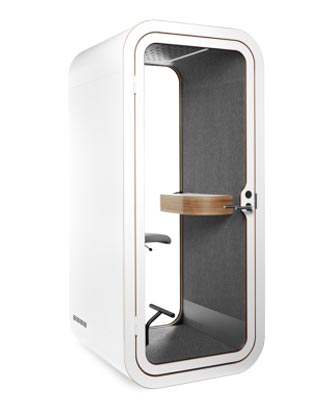How To Host Incredible Hybrid Events In 2022?

Table of Contents
The last few months have been a rollercoaster for marketing teams around the world. Go to market strategies had to be adjusted to ensure the safety of our audience when the pandemic hit us.
Consequently, marketing teams including ourselves started organizing virtual events. This was a great solution, it allowed for remote networking which was very welcome when everyone is working from home. At the same time, B2B pipeline generation heavily relies on networking as you’re unlikely to sell major deals without relationships with your prospects.
A direct effect of the pandemic is wonderful innovations in virtual events. The technology becomes much stronger and we benefit from better features. This will continue to benefit markets for many years even after the pandemic.
Naturally, marketers are excited to host in-person events again. To be honest, I think we all like to attend in-person events after working from home for so long!
So what does that mean for virtual events? When in-person events become the norm again, will we quit virtual events? In most cases, it’s likely that both virtual and in-person events become a critical part of go-to-market strategies.
However, it doesn’t have to be black or white. This is where hybrid events come into play. We will see a huge uplift of hybrid events moving forward. The technology can handle it nowadays and it provides huge benefits to both event organizers and the audience.
It does mean though, that now event organizers need to worry about both setting up and in-person events and a virtual event at the same time! This comes with extra challenges and considerations, but the pay-offs are worth it! So, in this article, we will go through how you can host a hybrid event.
Now, I’m sure you know about the basics of setting up events, so I won’t cover basic things in this article, but if you are looking for guides on how to host events, take a look at our previous articles about event marketing.
What is a hybrid event?
The definition of a hybrid event is a conference, tradeshow, workshop, or any other event that takes place in-person and virtually at the same time. The in-person and virtual audiences are able to connect through event management systems.
How to host a hybrid event?
Let’s dive into some key aspects of hosting hybrid events.
1. Plan for everything hybrid
It is crucial that both the in-person and virtual audience get approximately the same value out of the event.
This means that the integration of both worlds should be at the core of your event plan. You need to minimize the elements where people would benefit from attending the event one way or another.
This means that your event sponsors should have booth staffing that can cater to a virtual audience but also to an in-person audience. You can pre-design booths that people can modify slightly but that will include laptop stands in case the virtual audience wants to talk. Naturally, it would be a great benefit if the in-person sponsor booth is streamed to the virtual event platform.
After the sessions, both the in-person and virtual audience should get the opportunity to participate in a Q&A. Both audiences should be able to win prizes. This means that everything needs to be planned carefully.
A core element of B2B events is networking. Undoubtedly, this generates the most value for your audience. A huge benefit to your audience is the capability to arrange one-to-one meetings with sponsors and the audience.
Your event venue should cater to the capability that the in-person audience can participate in one-to-one meetings with the virtual audience.
A great way to do this is to set up phone booths with laptops so that people can video conference through the event management platform. Framery offers great solutions for this which are soundproof. An example below.

2. Select the right event management (hosting) platform
It goes without saying that having the right technology to support your hybrid event is an absolute must. As mentioned above, there have been many recent innovations in this area which is great!
When selecting your hybrid event technology, make a list of all your requirements. Take into consideration that multiple virtual events in your portfolio might switch to hybrid events into the near future.
So, when compiling your list, take a step back and make an inventory of requirements based on your full event portfolio.
The right hybrid event technology will make ticketing and registrations a seamless experience whether it being virtual or in-person.
Many of these platforms are limited by a number of users. So take a look at the largest event you might host and select a platform based on the expected virtual attendance.
When selecting hybrid event platforms, at least consider the following in terms of functionalities:
- High-bandwidth streaming capabilities
- Brandability
- Networking features (including one-to-one meetings)
- Dedicated event app for your audience
- Detailed and real-time reporting
- 24/7 support
- Marketing automation & MarTech integration
We’ve covered virtual and hybrid event platforms in the past on Markletic. For a list of virtual events platforms, take a look at this article.
3. Take time zones into consideration
One benefit of hybrid events that your audience can potentially join your event from anywhere on the globe. This is wonderful!
At the same time, this comes with a challenge: time zones.
Your hybrid event will be physically located in an area that represents the majority of your target audience. However, your virtual audience can join from anywhere in the world.
One way to combat this is to stream the live sessions to your hybrid event platform and then make them available on-demand straight away. This means that people can login anytime and still not miss a thing.
However, this only covers the content piece. You still need to deal with networking. As mentioned, the biggest value driver of your event for your audience is the ability to network.
A suggestion to combat this is to split your event up and host it across multiple days. Generally, there is a period of time that works for everyone. Rather than hosting your hybrid event for a full day, consider hosting it throughout two half days.
Here is a neat little tool to easily visualize your key timezones to facilitate your decision making.
4. Give yourself enough lead time
Whether you are new or seasoned to hosting hybrid events, please do yourself a favor. Give yourself enough lead time to set up everything.
By giving yourself enough lead time, you avoid a lot of frustration. In addition, you will ensure that you deliver the best user experience possible.
The amount of lead time you need depends on the complexity and scale of your hybrid event. Events that only have one session will require less lead time. On the other hand, events with 40 sessions will need a lot of preparation.
Don’t let your stakeholders push you into short timelines. It’s better to push back and deliver a stellar event. Especially if you’re new to hybrid events. If this is the first time you’re going to host a hybrid event, you need to be successful. Otherwise, your company will have a negative attitude towards hybrid events in the future.
5. Selecting the right venue
Well begun is half done! Select a venue that is experienced in hosting hybrid events.
Most event centers will have some degree in hosting hybrid events, but please do your due diligence.
Make sure that the venue has solid internet connections, that audio and visuals are on point, and that they have trained staff.
The venue needs to have an exceptional technical team who will help you to stream session content to your hybrid event platform.
There also needs to be enough space for one-to-one meetings and ideally they have connections with vendors who can supply soundproof phone booths.
You will save yourself a lot of work when selecting the right venue. Spend some extra time on it.
6. Recruit hosts & moderators
Similarly to selecting the right venue, you need to be sure to recruit the right hosts & moderators.
These people need to be highly knowledgeable and skilled in connecting a virtual and in-person audience.
At the same time, it’s your responsibility to provide them with the right tools. You need to set them up for success so make sure that the technology is top-notch and that everyone is briefed diligently.
The main role of the hosts & moderators of sessions is to ensure the in-person event runs smoothly. In addition, you can’t neglect the virtual audience. Your hosts & moderators are key to connect the two audiences - virtual and in-person.
Since we are dealing with technology, things can go wrong. Make sure that your hosts are briefed on what to do when technology fails.
7. Train the speakers to include the virtual audience
It’s easy for speakers to include an in-person audience. Likely, you’re going to invite experienced speakers and they have done this many times before.
Hybrid events are relatively new and rising. You need to train your speakers to include the virtual audience as well. A key moment for this is during live Q&A sessions which usually happens at the end of a keynote.
Train your speakers to also include the virtual audience.
8. Interaction is at the heart of the success
If this isn’t your first time on Markletic, you will know that a key factor of event success is interaction with your audience.
We did some research and it appears that 81.8% of virtual event organizers use event polling to improve interaction. In addition, 61% of marketers use videos as an interactive element to keep people engaged.
This shows that many marketers used basic techniques to ensure interaction and event engagement.
With a hybrid event, you need to worry about ensuring audience engagement for both your in-person audience and virtual audience. Now this requires a bit more thought than just hosting a virtual event or just an in-person event.
A great way to keep your audience entertained throughout the event is through gamification. For example, you can organize a treasure hunt where the audience needs to visit every booth in the exhibition hall. This works both in-person and virtually. Take a look at these gamification best practices.
In addition, something that I love doing when attending events is to collect gift bags. For your in-person audience, this is pretty straightforward to organize. However, you mustn’t forget about your virtual audience. Make sure that they have access to gift bags as well. Take a look at this guide on virtual event gift bags.
9. Opt for shorter session times
I’m not a fan of long session times. People and bored and distracted and this is especially true when dealing with a virtual audience.
Make sure that the sessions are short and to the point. This forces your speakers to deliver as much value as possible in a shorter timeframe and it’s generally a win for everybody.
Consider setting up the keynotes similar to Ted talks.
10. Develop backups plans for technical difficulties
Murphy’s law: Anything that can go wrong will go wrong. This is especially true when dealing with technical equipment.
Plan for failures and that things will go wrong. Always have back up plans and sit together with your team to map out the worst case scenarios.
11. The event app connects the virtual and live audience
An event application is a must have. This will connect your virtual and in-person audience. It’s nearly impossible to organize a successful hybrid event without this.
Through the event app, your audience will be able to configure their agenda’s. However and more importantly, your audience will be able to chat with other people and schedule one-to-one meetings.
People will have their personal agenda in the app and other people can see their available time slots.
The in-person audience can walk to a soundproof booth and use the event app to call the virtual attendee. If you’re serious about delivering value for your audience, perfect this process.
12. Do dry-runs and then do them again
I can’t stress this enough but do dry-runs and then do some more. All your speakers need to be trained on how to engage both an in-person and virtual audience in a hybrid event.
In addition, your moderators and hosts need to make both audiences feel included and this takes some practice. Things will go wrong in a dry-run and that’s perfectly fine because that’s why we do them.
Good luck with your hybrid events and take a look at these 10 Expert Virtual Event Learnings from 50+ events to help you prepare!
Share this article



